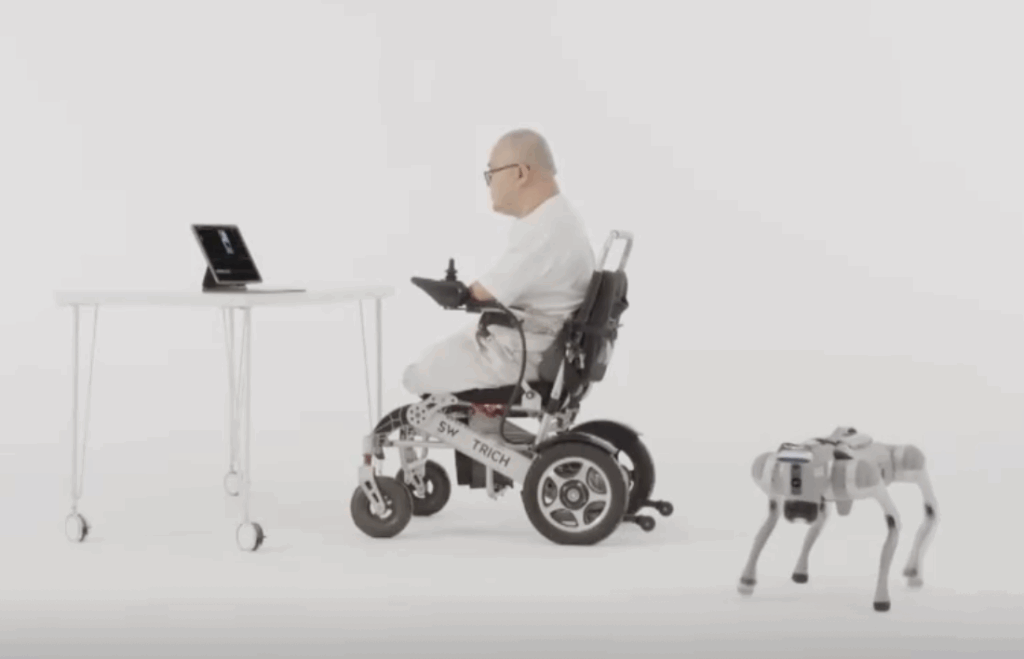https://www.cas.cn/cm/202507/t20250723_5077439.shtml
https://tv.cctv.com/2025/06/14/VIDEmblLPDbaK4I9u9wWklt6250614.shtml
The CAS Center for Excellence in Brain Science and Intelligence Technology, in cooperation with Fudan University’s Huashan Hospital, has introduced a brain-computer interface into a man who lost his limbs due to a high-voltage electrical accident. After surgery, he was shown to play chess and racing games with his mind, and the speed was almost the same as that of ordinary people operating a computer touchpad.
This type of surgery is full of challenges. Thus, if the electrode is rough, it may cause brain tissue inflammation or even failure; if the operation is complicated, the patient’s recovery period will be very long and the risk of infection will be high.
Before performing surgery functional magnetic resonance imaging combined with CT imaging technology was used to reconstruct a three-dimensional model and the detailed functional map of the patient’s brain’s motor cortex to help ensure the accuracy of the implantation location. For surgery, a subversive “embedded” method was used instead of opening the entire skull, a coin-sized groove was embedded on the skull above the brain’s motor cortex, a 5 mm puncture hole was made in the groove, and a tungsten needle was used to “bury” the two flexible neural electrodes like thin ribbons from the puncture hole into the brain tissue.
This flexible neural electrode has a cross-sectional area of the neural electrode of only about 1/100 of a hair, 1/7 to 1/5 of that of the US Neuralink electrodes. Its flexibility is more than 100 times that of Neuralink, making brain cells almost “unaware” of the existence of foreign matter, minimizing damage to brain tissue and inflammatory response.
After the brain-computer interface device is implanted, whether it can read brain nerve signals in real time and complete motion decoding is a key link in brain-computer interface technology. The system needs to complete the entire process of feature extraction of neural signals, motion intention analysis and control instruction generation within a window period of more than ten milliseconds. The core innovation of the research team is a self-developed online learning framework, which is like a real-time “brain language translator”. It can continuously adjust parameters according to the subtle changes in brain signals in different time periods, gradually “understanding” the user’s intentions, and realizing true “human brain-machine” collaboration. It is said to have achieved “cross-day stability”: even if the brain activity patterns today and tomorrow are slightly different, the system will not “strike” and can still accurately decode.
After only 2-3 weeks of adaptive training since the operation, the patient had achieved typing, texting, and playing computer games like a normal person. With the assistance of the brain-computer interface system, he regained the feeling of “hands-on” and rebuilt his connection with the world bit by bit. In the next step, the project team will try to let the subject use a robotic arm so that he can complete operations such as grasping and holding a cup in physical life. The follow-up will also involve the control of complex physical peripherals, such as the control of intelligent agent devices such as robot dogs and embodied intelligent robots, so as to expand his life boundaries.
The brain-computer interface system is expected to help patients with complete spinal cord injury, bilateral upper limb amputation and amyotrophic lateral sclerosis after it is approved for registration and listing in the future. Through brain-computer interface technology, external devices can be controlled to restore motor function and improve the quality of life.


